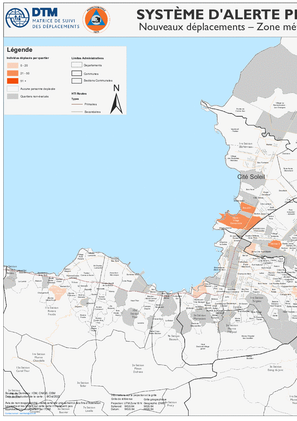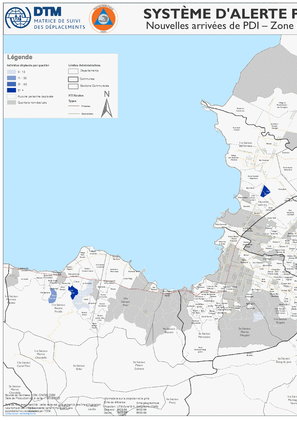-
Countries
-
Data and Analysis
-
Special Focus
-
Crisis Responses
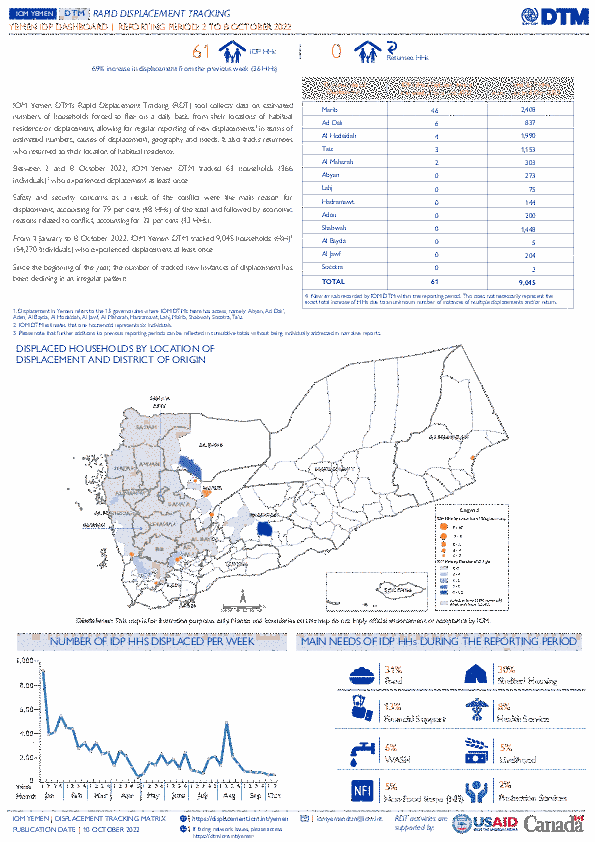
Contact
DTM Yemen, iomyemendtm@iom.int
Language
English
Location
Yemen
Period Covered
Oct 02 2022
Oct 08 2022
Activity
- Mobility Tracking
IOM Yemen DTM’s Rapid Displacement Tracking (RDT) tool collects data on estimated numbers of households forced to flee on a daily basis from their locations of origin or displacement, allowing for regular reporting of new displacements in terms of estimated numbers, geography, and needs. It also tracks returnees who returned to their location of origin.
From 1 January to 8 October 2022, IOM Yemen DTM tracked 9,045 households (HH) (54,270 Individuals) who experienced displacement at least once.
Between 2 and 8 October 2022, IOM Yemen DTM tracked 61 households (366 individuals) displaced at least once. The majority of people moved into/within the following governorates and districts:
- Marib (46 HHs) – Marib City (36 HHs), Harib (4 HHs), Marib (4 HHs) districts. Most displacements in the governorate originated from Shabwah and Al Hodeidah.
- Ad Dali (6 HHs) – Ad Dali (4 HHs), Qatabah (2 HHs) districts. All displacements in the governorate were internal.
- Al Hodeidah (4 HHs) – Hays (4 HHs) district. Most displacements in the governorate originated from Taiz and Al Hodeidah.
The majority of people moved from the following governorates and districts:
- Al Hodeidah (12 HHs) – Az Zaydiah (4 HHs), Hays (2 HHs), Al Mansuriyah (2 HHs) districts.
- Shabwah (11 HHs) – Ataq (9 HHs), Markhah As Sufla (2 HHs) districts.
- Taiz (9 HHs) – Jabal Habashi (3 HHs), Maqbanah (3 HHs), Salah (1 HH) districts.

Contact
DTMMozambique@iom.int
Language
English
Location
Mozambique
Period Covered
Sep 21 2022
Nov 03 2022
Activity
- Mobility Tracking
- Event Tracking
During the reporting period (21 September to 03 October 2022), a total of 186 movements were recorded - 102 arrivals (8,450 individuals), 46 departures (2,838 individuals), 1 transit (265 individuals), and 36 returns (5,939 individuals). The largest arrival movements were recorded in Metuge (4,941 individuals), Ancuabe (1,911 individuals), Mueda (473 individuals), and Quissanga (398 individuals). The largest departure movements were recorded in Palma (1,363 individuals), Nangade (535 individuals) Metuge (422 individuals), and Mueda (421 individuals). Only one transit movement was observed in Mueda (265 individuals). The largest return movements were observed from Montepuez (3,819 individuals) to Mocimboa da Praia, within Quissanga (1,362 individuals), and within Muidumbe (507 individuals). Of the total population, 28 per cent of mobile groups were displaced for the first time, 45 per cent for a second time, and 27 per cent were displaced at least three times.
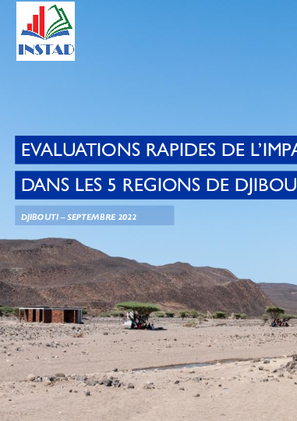
Contact
acarruet@iom.int
Language
French
Location
Djibouti
Period Covered
Jul 27 2022
Sep 07 2022
Activity
- Mobility Tracking
Afin de pouvoir appuyer la réponse humanitaire au bénéfice des populations affectées, l’OIM, en coordination avec l’Institut National de la Statistique (INSTAD) et les autorités locales, a mené des évaluations rapides dans les régions d’Ali-Sabieh, de Dikhil, de Tadjourah, de Arta et d’Obock. Une première évaluation a été menée entre le 27 juillet et le 2 août 2022 dans 62 localités d’Ali-Sabieh et 66 localités de Dikhil. La deuxième évaluation a été menée entre le 1er et le 7 septembre dans 245 localités de Tadjourah, 186 localités d’Obock et 64 localités d’Arta.
Cet exercice avait pour but de fournir un aperçu de la situation et des besoins prioritaires des populations dans ces cinq régions. Des données ont été collectées sur les lieux d’origine, les lieux de déplacement, le nombre et les besoins des populations affectées par la sécheresse. Cette enquête ciblait spécifiquement les deux groupes de population suivants: les Personnes Déplacées Internes (PDI) et les migrants. Pendant les évaluations rapides menées dans un total de 623 localités dans les 5
régions du pays, 6,086 personnes déplacées internes et 1,506 migrants ont été recensés.

Contact
acarruet@iom.int
Language
English
Location
Djibouti
Period Covered
Jul 27 2022
Sep 07 2022
Activity
- Mobility Tracking
In order to inform the humanitarian response, IOM, in collaboration with the National Statistics Institute (INSTAD) and local authorities, conducted rapid assessments in the regions of Ali-Sabieh, Tadjourah, Dikhil, Arta and Obock. The first rapid assessment was conducted between the 27th of July and 2nd of August 2022 and covered 62 localities in Ali-Sabieh and 66 localities in Dikhil. The second assessment was conducted between the 1st and the 7th of September 2022 and covered 245 localities in Tadjourah, 186 localities in Obock and 64 localities in Arta.
These assessments were conducted in order to provide a better understanding of the situation and the priority needs of drought-affected populations. Data was collected on areas of origin, areas of displacement, numbers and needs of drought-affected populations. The assessment specifically targeted the following two population groups: Internally Displaced Persons (IDPs) and migrants. During the assessments conducted in a total of 623 localities in the 5 regions of the country, 6,086 Internally Displaced Persons (IDPs) and 1,506 migrants were tracked.
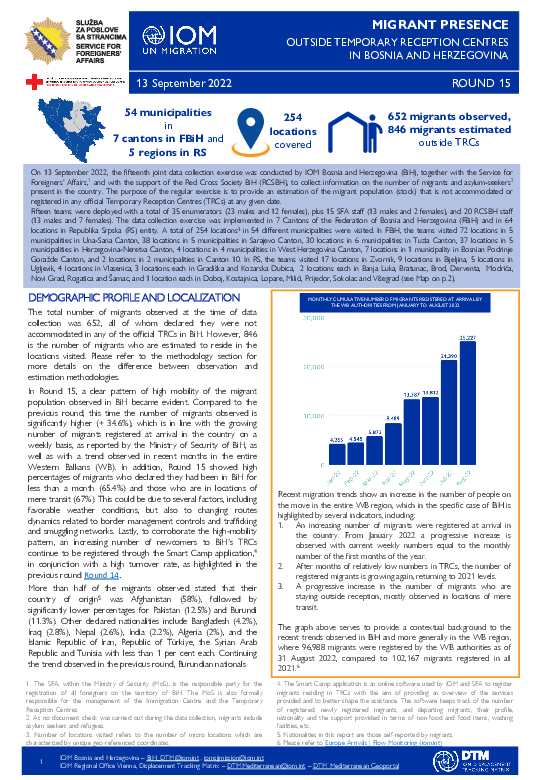
Contact
DTM Europe, DTMMediterranean@iom.int
Language
English
Location
Bosnia & Herzegovina
Snapshot Date
Sep 13 2022
Activity
- Migrants presence
- Mobility Tracking
On 13 September 2022, the fifteenth joint data collection exercise was conducted by IOM Bosnia and Herzegovina (BiH), together with the Service for Foreigners’ Affairs, and with the support of the Red Cross Society BiH (RCSBH), to collect information on the number of migrants and asylum-seekers present in the country. The purpose of the regular exercise is to provide an estimation of the migrant population (stock) that is not accommodated or registered in any official Temporary Reception Centres (TRCs) at any given date.
Fifteen teams were deployed with a total of 35 enumerators (23 males and 12 females), plus 15 SFA staff (13 males and 2 females), and 20 RCSBH staff (13 males and 7 females). The data collection exercise was implemented in 7 Cantons of the Federation of Bosnia and Herzegovina (FBiH) and in 64 locations in Republika Srpska (RS) entity. A total of 254 locations3 in 54 different municipalities were visited. In FBiH, the teams visited 72 locations in 5 municipalities in Una-Sana Canton, 38 locations in 5 municipalities in Sarajevo Canton, 30 locations in 6 municipalities in Tuzla Canton, 37 locations in 5 municipalities in Herzegovina-Neretva Canton, 4 locations in 4 municipalities in West Herzegovina Canton, 7 locations in 1 municipality in Bosnian Podrinje Goražde Canton, and 2 locations in 2 municipalities in Canton 10. In RS, the teams visited 17 locations in Zvornik, 9 locations in Bijeljina, 5 locations in Ugljevik, 4 locations in Vlasenica, 3 locations each in Gradiška and Kozarska Dubica, 2 locations each in Banja Luka, Bratunac, Brod, Derventa, Modriča, Novi Grad, Rogatica and Šamac, and 1 location each in Doboj, Kostajnica, Lopare, Milići, Prijedor, Sokolac and Višegrad.
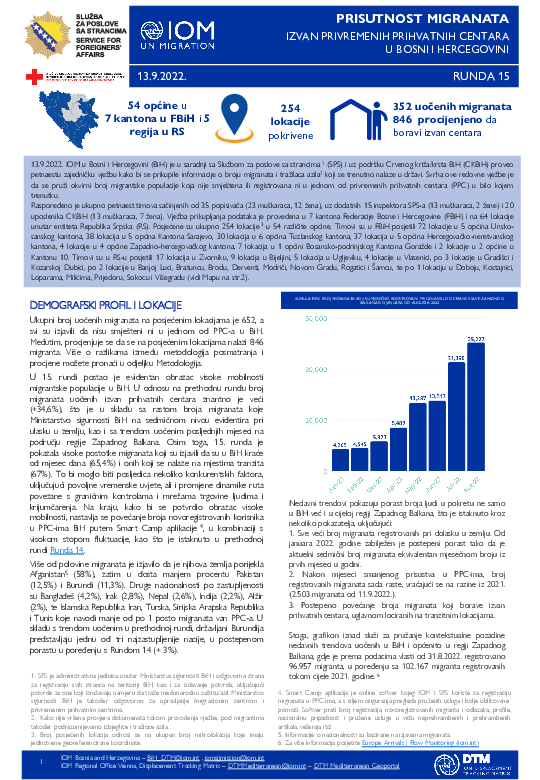
Contact
DTM Europe, DTMMediterranean@iom.int
Language
Bosnian, Croatian, Serbian
Location
Bosnia & Herzegovina
Snapshot Date
Sep 13 2022
Activity
- Migrants presence
- Mobility Tracking
IOM u Bosni i Hercegovini (BiH) je u saradnji sa Službom za poslove sa strancima 1 (SPS) i uz podršku Crvenog križa/krsta BiH (CKBiH) proveo petnaestu zajedničku vježbu kako bi se prikupile informacije o broju migranata i tražilaca azila2 koji se trenutno nalaze u državi. Svrha ove redovne vježbe je da se pruži okvirni broj migrantske populacije koja nije smještena ili registrovana ni u jednom od privremenih prihvatnih centara (PPC) u bilo kojem trenutku.
Raspoređeno je ukupno petnaest timova sačinjenih od 35 popisivača (23 muškaraca, 12 žena), uz dodatnih 15 inspektora SPS-a (13 muškaraca, 2 žene) i 20 uposlenika CKBiH (13 muškaraca, 7 žena). Vježba prikupljanja podataka je provedena u 7 kantona Federacije Bosne i Hercegovine (FBiH) i na 64 lokacije unutar entiteta Republika Srpska (RS). Posjećene su ukupno 254 lokacije 3 u 54 različite općine. Timovi su u FBiH posjetili 72 lokacije u 5 općina Unskosanskog kantona, 38 lokacija u 5 općina Kantona Sarajevo, 30 lokacija u 6 općina Tuzlanskog kantona, 37 lokacija u 5 općina Hercegovačko-neretvanskog kantona, 4 lokacije u 4 općine Zapadno-hercegovačkog kantona, 7 lokacija u 1 općini Bosansko-podrinjskog Kantona Goražde i 2 lokacije u 2 općine u
Kantonu 10. Timovi su u RS-u posjetili 17 lokacija u Zvorniku, 9 lokacija u Bijeljini, 5 lokacija u Ugljeviku, 4 lokacije u Vlasenici, po 3 lokacije u Gradišci i Kozarskoj Dubici, po 2 lokacije u Banjoj Luci, Bratuncu, Brodu, Derventi, Modriči, Novom Gradu, Rogatici i Šamcu, te po 1 lokaciju u Doboju, Kostajnici, Loparama, Milićima, Prijedoru, Sokocu i Višegradu.
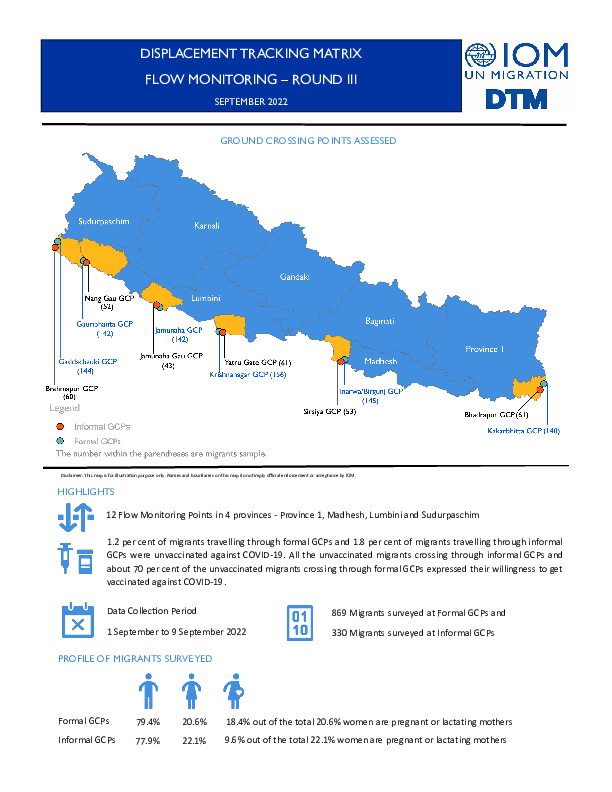
Contact
iomnepal@iom.int
Language
English
Location
Nepal
Period Covered
Sep 01 2022
Sep 09 2022
Activity
- Survey
- Flow Monitoring Survey
IOM Nepal collected data at 12 ground crossing points (GCPs) six formal and six informal, in an effort to better understand the migration movements between India and Nepal. The exercise intended to collate feedback from the migrants for improving COVID-19 related response and deliver multisectoral services, ultimately contributing to strengthen the GCPs’ capacities, providing safe and regular crossing for migrants. This exercise was conducted as a part of European Union Directorate General for European Civil Protection and Humanitarian Aid Operations funded “Effective Case Management by Strengthening Isolation Centres and Ground Crossing Points (GCPs) Management for Rapid Response and Preparedness Against COVID-19” project.
In total, 1,199 individuals (869 at formal GCPs and 330 at informal GCPs) were interviewed for the flow monitoring exercise in Province 1, Madhesh, Lumbini and Sudurpaschim Provinces. The report presents data collected on flows, demographics profile of migrants, services available to the migrants at the formal GCPs and suggestions for improvement of services. The survey at the informal GCPs was conducted to primarily assess the intentions of migrants for using informal GCPs. Since multisectoral services are only available at the formal GCPs, the survey does not include questions on services at informal GCPs.
Carte des Nouvelles arrivées des PDI dans la zone métropolitaine de Port-au-Prince, du 24 - 30 septembre 2022.
Haiti – Système D’alerte Précoce pour les Déplacements - Nouveaux déplacements (24 - 30 septembre 2022)
Carte des Nouvelles arrivées des PDI dans la zone métropolitaine de Port-au-Prince, du 17 - 23 septembre 2022.

